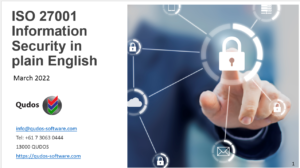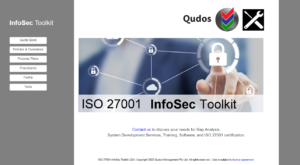ISO 27001 Information Security in plain English

ISO 27001 Information Security in plain English: 29 March 2022
We were delighted to host our webinar last week - 'ISO 27001 Information Security in plain English' and a big thank you to all those who registered.
Information Security is becoming critical to every business, and there is a fast-growing trend towards developing management systems based on the ISO 27001 standard. However, the subject and its terminology can certainly be a little daunting. So, we set out to cut through that in this webinar.
The webinar covered topics including:
- What is information security?
- Is it relevant to your business or organization?
- Cyber attacks (with examples of prominent data breaches)
- Application to large and small businesses
- Customer requirements
- Legal / regulatory requirements
- The ISO 27001 standard
- Its relationship to the PDCA cycle
- ISO 27001 clauses
- ISO 27001 annex controls
- Steps to consider
- Gap analysis
- Project planning
Whether you were able to join us or not, a copy of the slide deck is available for you here:
Qudos_ISO_27001 Information_Security_in_plain_English (PDF)
The webinar also marked the launch of Qudos ISO 27001 InfoSec Toolkit. which provides very cost-effective resources to help your organization get started on its ISMS (Information Security Management System) based on the ISO 27001 standard. The toolkit includes a guidebook to give you an understanding requirements, gap analysis and planning, plus a huge library of template policies, procedures, and forms.

The toolkit was released to Qudos 3 IMS software cloud service users over the weekend.
This post commences a regular blog on information security where we will work through all the clauses and controls in ISO 27001. A great starting point for developing your ISMS. In the first blog, we will take a look at addressing ISO 27001 clause 4: Context (including understanding the cntext of the organization, the needs and expectations of interested parties, establishing the scope of the ISMS, and setting out the system).
Why not join us?
Just click the LinkedIn Follow button below to receive notifications.
